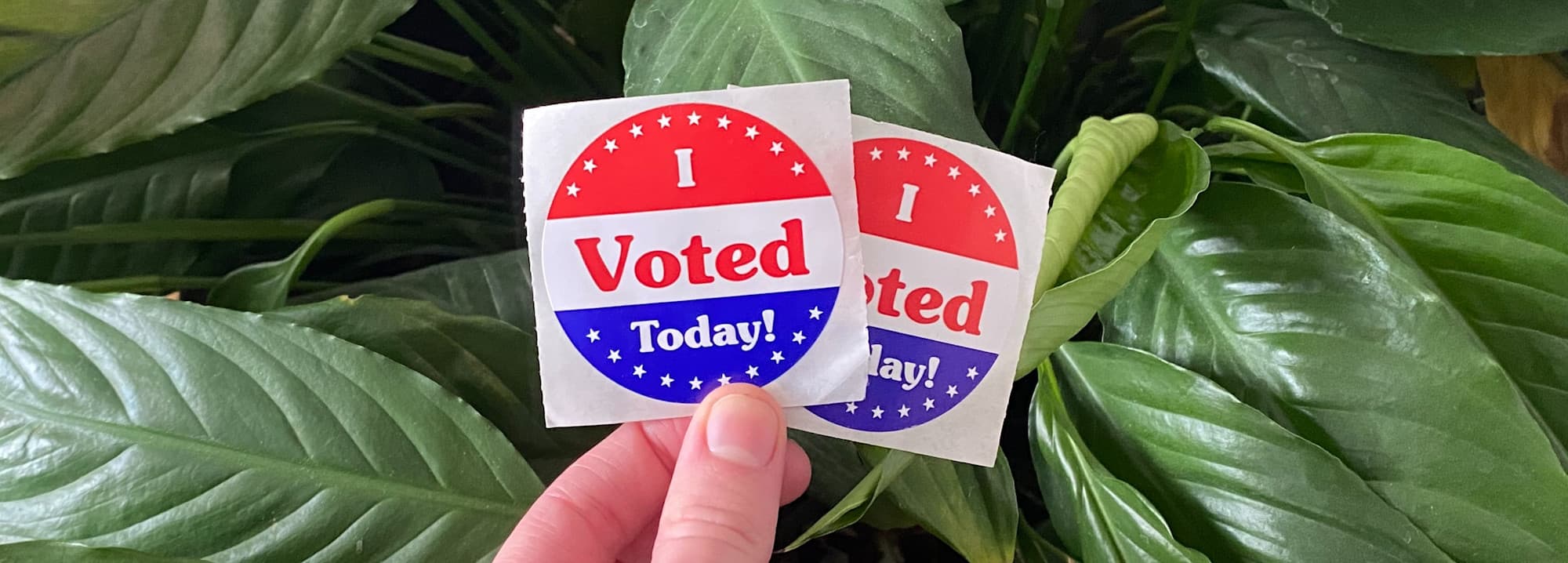
How to Increase Voter Turnout: 8 Tactics for Local Elections
Voter turnout is what keeps democracy running, but in local elections, participation is often alarmingly low. While more than 65% of eligible voters cast a ballot in the 2024 presidential election, many municipal and school board contests struggle to attract even 20% turnout.
The outcome of your election could be decided by just a handful of ballots, making your campaign’s ability to mobilize voters crucial for your success.
For local, nonpartisan, and Independent candidates, efforts to increase voter turnout promote fairness but are also a winning strategy. By planning ahead, addressing ballot barriers, and connecting with people directly, you can turn passive supporters into active voters. Let’s explore eight practical strategies to increase voter turnout in your community.
8 Strategies to Increase Voter Turnout in Local Elections
These proven strategies combine campaign best practices with community-based outreach to help Independent and local candidates mobilize more voters. Whether you’re a candidate running for city council or a volunteer helping organize a nonpartisan turnout drive, each approach below can boost participation where it matters most: in your neighborhood.
#1: Build a GOTV Plan and Timeline
A successful get-out-the-vote (GOTV) effort doesn’t happen on its own. Start planning your timeline weeks in advance so you know who you’ll contact, how, and when.
A strong GOTV plan should include:
Identifying your universe of supporters and leaners
Scheduling contact waves of texts, calls, and in-person canvassing
Assigning volunteer roles and shifts
Preparing backup plans for election day logistics
When mapped out in advance, your campaign avoids last-minute scrambling and ensures no supporter is left behind.
#2: Target Supporters With Precision
Not every voter needs to be persuaded. In the final stretch, focus on mobilizing your strongest supporters and those who lean your way but might not always vote.
To do this effectively, use the voter file and other voter data to:
Build a supporter list during canvassing and events, and from sign-ups on your website
Organize supporter lists by likelihood of turnout, like strong, lean, or low-propensity
Prioritize outreach to those who need extra encouragement
Concentrating on the right voters maximizes your resources and ensures your outreach translates directly into ballots cast.
#3: Layer Contact Methods for Maximum Impact
Relying on just one outreach channel leaves votes on the table. A layered approach creates multiple touchpoints, keeping your campaign top of mind for voters.
Some proven methods for political outreach in the homestretch include:
Door-to-Door Canvassing: Face-to-face conversations remain the most persuasive form of outreach. Campaigning door-to-door can increase a candidate’s vote share by 3% which is enough to make or break a local election.
Phone Banking: Short, encouraging phone calls can help confirm plans and offer assistance.
Text Messaging: With some studies showing that texts have a 98% open rate, a quick, personal reminder can help ensure your supporters see your message and get out to the polls.
Literature Drops: Door hangers and flyers with polling details reinforce messages when no one is home.
Combining these channels ensures your campaign connects with voters where they are and in the ways they prefer.
LEARN MORE: Unsure what to say? Check out our free GOTV texting scripts to refine your SMS messages.
#4: Encourage Voting Plans and Use Social Proof
Research shows that voters are more likely to follow through when they make a concrete plan. Instead of asking if someone will vote, assume they will and help them figure out how.
Ask questions like:
What time of day do you plan to vote?
How will you get to your polling place?
Do you know the address of your polling location?
You can use the psychology of voting and add social proof. Mentioning that their neighbors are already planning to vote can reinforce positive behavior and encourage them to vote, too. These simple conversations create accountability and make turnout more likely.
#5: Promote Early Voting and Mail-In Ballots
For many voters, election day isn’t convenient. That’s why encouraging early voting or absentee ballots is a powerful way to reduce no-shows.
Share information about:
Deadlines for requesting and submitting absentee ballots
Locations of drop boxes and early voting sites
How to track a ballot’s status once submitted
By helping voters participate on their own schedule, you take pressure off election day and shrink the number of people you need to reach during GOTV as early ballots come in.
#6: Remove Practical Barriers to Voting
Sometimes voters want to participate but face real-life obstacles. Your campaign can help eliminate these hurdles and make turnout possible.
Ways to support your community and lower the barriers to voting include:
Organizing rides to the polls with volunteers or ride-share partners
Offering childcare options on election day
Providing translated materials for multilingual communities
Ensuring accessibility for voters with disabilities
By meeting people where they are and reducing logistical friction, you turn intention into action.
#7: Mobilize Volunteers With Clear Roles
Your volunteers are the engine of GOTV. To use their time and energy effectively, give them structured roles and responsibilities.
On election day, assign volunteers to:
Phone banking and text outreach to last-minute voters
Poll watching and reporting turnout
Sign waving at high-traffic intersections
Driving supporters to the polls
Data management and social media monitoring
Clarity prevents overlap, ensures coverage, and makes your team feel valued. Even small, local campaign teams can operate like well-oiled machines with good planning.
#8: Track Progress and Adapt in Real Time
Turnout isn’t static. It changes hour by hour. That’s why campaigns that monitor and adjust throughout election day often outperform those that don’t.
Track who has already voted, compare it to your win number, and redirect resources as needed. For example, if one precinct lags behind, send canvassers or drivers to that area. If misinformation spreads online, deploy volunteers to correct it quickly.
Agility allows your campaign to stay focused on the voters who matter most in the final hours.
LEARN MORE: Watch our free webinar on GOTV and turnout tactics to get insider insights on mobilizing your voter base.
Why Turnout in Local Elections Matters
Voter turnout is a reflection of how engaged, informed, and represented a community truly is. In local elections, where turnout often drops below 20%, even small increases in participation can change outcomes dramatically. Every additional ballot helps shape the future of schools, housing, and public safety in your community.
When only a small portion of voters participate, decisions fall into the hands of a narrow few. That can leave younger voters, working families, renters, and underrepresented communities without a meaningful voice in local decision-making.
Low turnout in local elections happens for many reasons, and most of them are preventable. Some of the most common barriers include:
Complicated registration processes that deter new or infrequent voters.
Limited polling access, like long lines, few locations, or inconvenient hours.
Misinformation and confusion about election dates or mail-in ballot rules.
Distrust in the system, often rooted in years of unequal access and representation.
Apathy or a sense that local races don’t matter, especially when media coverage is limited or nonpartisan ballots make choices feel less clear.
Each of these barriers weakens civic participation, but they also present an opportunity. When campaigns and communities make voting simpler, more personal, and more transparent, turnout rises.
The truth is, every local vote carries exponential weight. In small elections, a handful of ballots can decide who sets your school budget, manages public works, or enacts local ordinances. By focusing on turnout, your campaign isn’t just trying to win. You’re helping strengthen democracy from the ground up.
LEARN MORE: Explore the impact voter turnout really has in local elections.
Increasing Turnout by Turning Plans Into Participation
Increasing voter turnout is both a civic duty and a winning strategy for local campaigns. By making a plan, targeting the right supporters, layering outreach, and addressing barriers, you can maximize participation and ensure every vote counts.
Your path to victory is paved not just with persuasion, but with mobilization. Every conversation, every text, every ride to the polls helps build a healthier, more representative democracy.
At GoodParty.org, we’re here to help you put these strategies into action. From free GOTV checklists to powerful and affordable campaign tools, we empower Independent candidates with the resources they need to win.
Ready to mobilize your community and boost turnout? Explore GoodParty.org’s free and low-cost campaign tools built to power your GOTV strategy.

